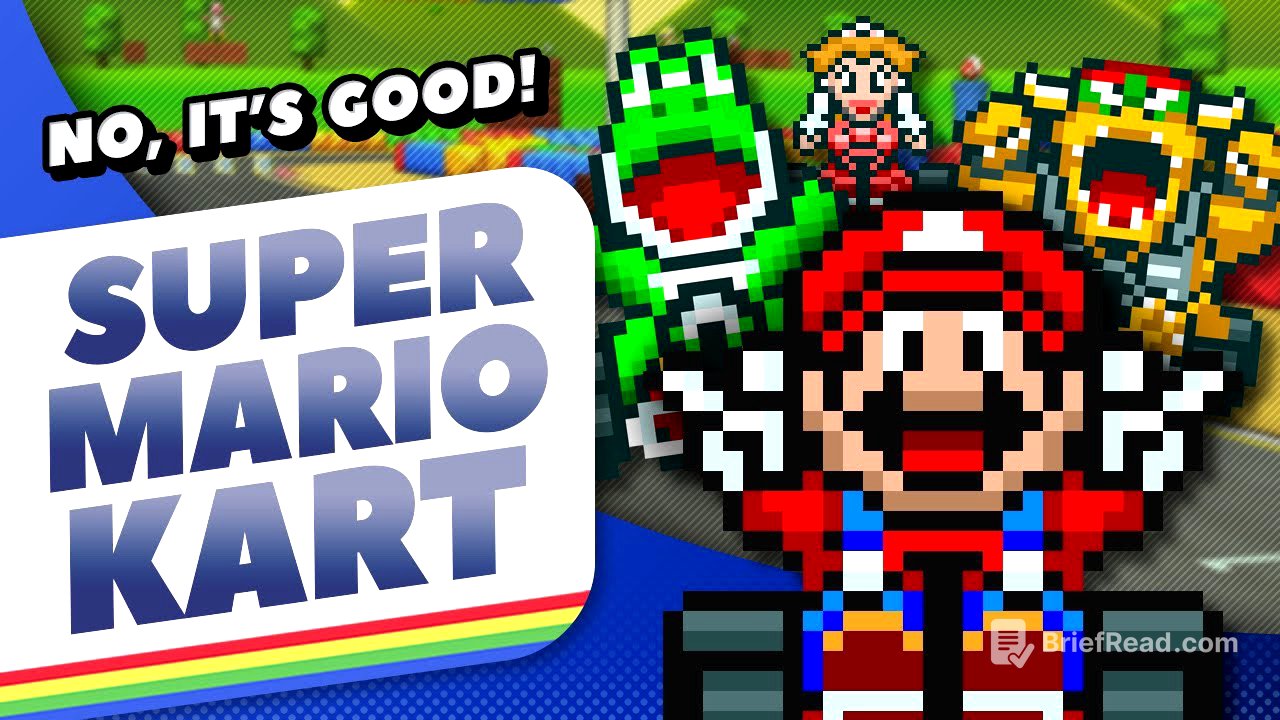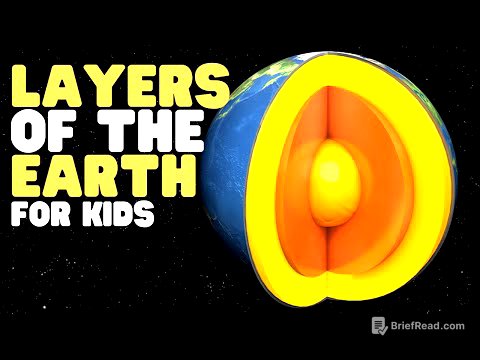TLDR;
The video is a retrospective look at the original Super Mario Kart on the SNES. The speaker discusses its historical importance, highlighting how it established many of the series' core elements like the roster, items, and track themes. He also talks about the game's unique aspects, such as CPU-specific items and the high level of difficulty due to intentional design choices. The speaker also touches on the game's flaws, like rubber banding and visual clarity issues on certain tracks, before diving into the simple yet enjoyable battle mode.
- Super Mario Kart established core elements of the series.
- The game features unique aspects like CPU-specific items.
- The difficulty is high due to intentional design choices.
- Battle mode is simple yet enjoyable.
Introduction: A Nostalgic Look at Super Mario Kart [0:03]
The speaker recounts his first experience with video games, which was playing Super Mario Kart as a child. He emphasizes the sentimental value the game holds for him. With the release of Mario Kart World imminent, he decided to revisit Super Mario Kart to examine its essence and what it aimed to achieve. Despite some dismissing it as simple and challenging by today's standards, he argues that it holds significant value as the foundation of the Mario Kart series.
Establishing the Mario Kart Formula [2:07]
Super Mario Kart established many essential elements of the Mario Kart series, including its roster of characters. The game features various course hazards and introduces drifting and hopping mechanics. Most importantly, it debuts iconic items like green shells, red shells, banana peels, and stars, which have become staples of the series. The items function similarly to their modern counterparts, demonstrating that the original game got them right from the start.
Unique Item System and CPU Personalities [3:45]
In Super Mario Kart, items are obtained from floor panels instead of item boxes, and these panels don't respawn until everyone has taken one. Only the player can use items in the traditional sense. Each CPU racer has a specific item they use when playing against them, such as Mario and Luigi becoming invincible, Yoshi dropping eggs, and Bowser dropping fireballs. This unique system gives each NPC racer more personality, making them more distinct on the track. This concept was revisited in Mario Kart Double Dash but hasn't been seen since.
The Intentionally Difficult Design [5:24]
The speaker argues that Super Mario Kart's difficulty is not due to bad design but is intentional. Games of the era were designed to be challenging to keep players engaged. He uses the analogy of operating a forklift to describe the game's controls, noting that mastering the difficult controls feels rewarding. The game demands precise control, and races can be decided by small mistakes. While modern Mario Kart games focus on multiplayer chaos, Super Mario Kart's challenge comes from mastering the game itself.
Rubber Banding and Track Design Limitations [7:48]
One major issue in Super Mario Kart is the rubber banding, where the CPUs, particularly Peach, can unfairly catch up to the player. This type of difficulty doesn't reflect the player's skill. Additionally, CPUs can sometimes jump over items, which the player cannot do. The track designs are limited by the Super Nintendo hardware, using Mode 7 rendering to create a pseudo-3D look. This results in flat tracks with little elevation. Visual clarity can also be an issue, especially on tracks like Rainbow Road, Bowser's Castle, and Vanilla Lake.
Track Themes and Standout Courses [10:49]
The tracks in Super Mario Kart iterate on a few themes, likely to conserve cartridge space. The themes are based on the Mario universe, including Ghost Valley from Super Mario World. The best track designs are Mario's Circuit, Ghost Valley, and Bowser Castle. Ghost Valley 1 features a shortcut that utilizes elevation. Overall, the tracks are the least interesting part of the game, but they establish the foundation for future installments.
Battle Mode: Simple and Engaging [11:45]
Battle mode in Super Mario Kart is simple yet enjoyable. Players are dropped into one of four arenas and must hit their opponent three times to win. The speaker enjoys the urgency of having only one opponent and trying to predict their moves. The limited view, due to the hardware constraints, makes battle mode more interesting, as it's harder to screen peek effectively. Battle Course 2 and 4 are the speaker's favorites due to the hiding spots they offer.
Conclusion: A Foundation of the Mario Kart Series [13:03]
The speaker concludes that Super Mario Kart was a successful first entry in the series. Despite its flaws, it established the heart and soul of the Mario Kart franchise. The speaker even prefers it over Mario Kart 64. He encourages viewers to share their opinions on the game and mentions upcoming Mario Kart World streams.









